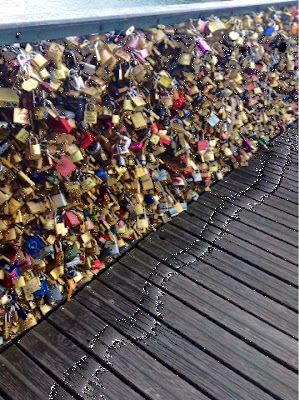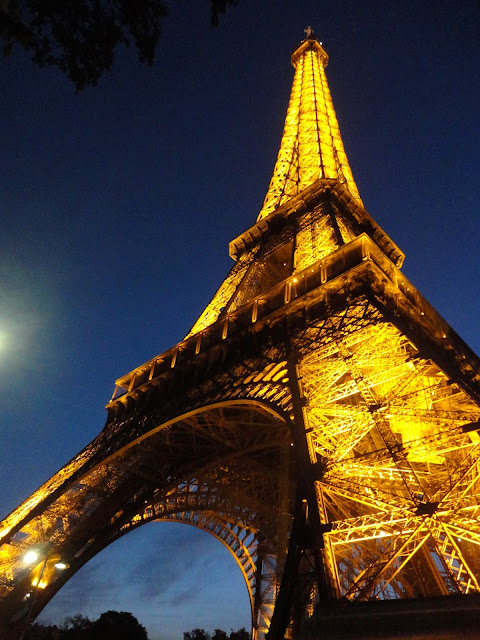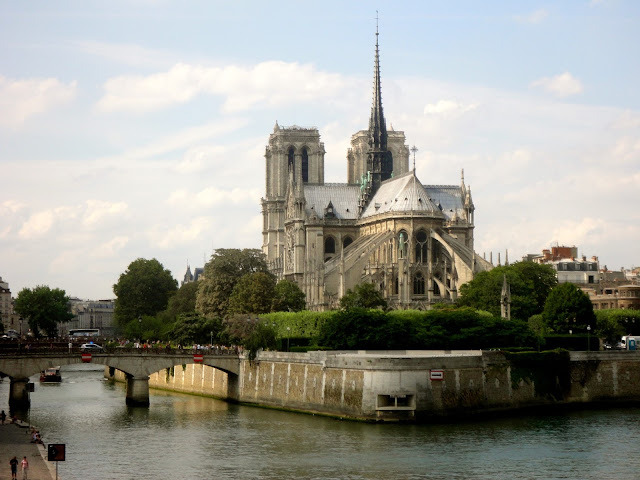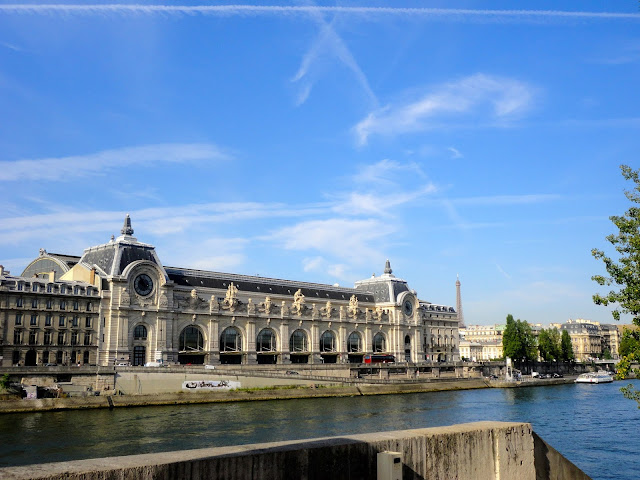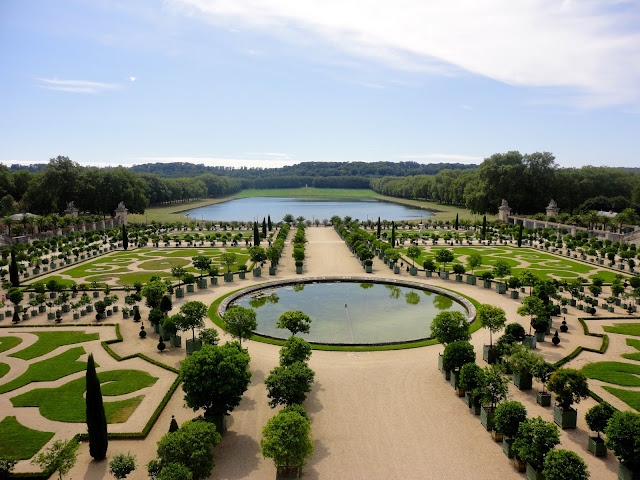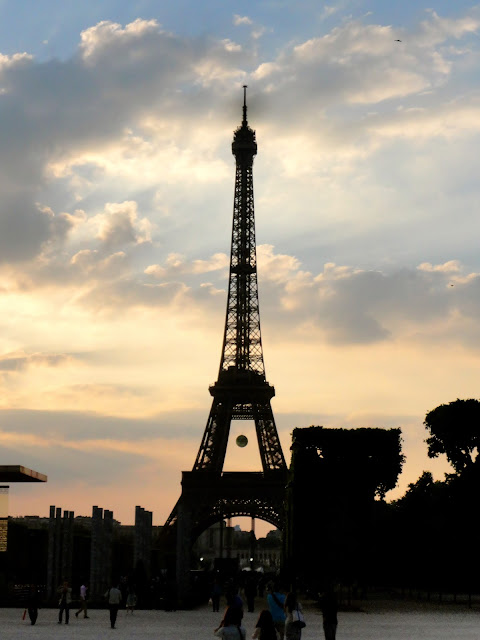
A-Z of Paris
So a while ago I took you all on a tour around Edinburgh, with sights and stories from A-Z, so I thought I’d try it again with another city I’m familiar with; Paris. Now I’ve never actually lived in Paris, but did live nearby during my year abroad, and have managed to see quite a lot of the city during my various visits. I haven’t been to every single place on this list, but I thought it would be fun for me to do a little research and learn some more about the city, since I’m certainly not an expert. It is one of my favourite cities though, and although I didn’t love my year abroad overall, I always enjoy spending time in Paris.
A – Arc de Triomphe
A pretty obvious one to start off with! The Arc de Triomphe is one of Paris’s most iconic sights, and while many other cities in France, and Europe, have their own versions, none quite compare to this. It is a monument to those who died in the French revolution, with names inscribed inside it, and also hosts the Tomb of the Unknown Soldier from WW1. I haven’t been up it myself, but you can climb to the top, which at 50m, is not the highest place in Paris, but will give you a view down the splendid Champs Elysées. Its location is also pretty special, as it stands in the centre of the craziest roundabout you’ve ever seen – I will never, ever attempt to drive around that! Twelve streets meet here, and there are no lanes for travelling around it – definitely use the underpass if you want to reach the Arc itself!
B – Bastille
This name refers to an area of Paris just east of the city centre, and is centred around Place de la Bastille. Originally, a fortress known as the Bastille stood here, and served as a prison. However, the “Storming of the Bastille” occurred during the French Revolution, and the building was subsequently destroyed. The square stands in its former location now, and is often the site of political rallies. There are plenty of cafés and bars in the area, and its a popular nightlife district.
C – Champs Élysées
Possibly one of the most famous shopping streets in the world, the Avenue des Champs Élysées stretches 1.2 miles from the Arc de Triomphe to Place de la Concorde.I’ve strolled its length many times, though most commonly just for window shopping, as luxury brands like Chanel and Louis Vuitton have stores here, though there are also shops found worldwide with stores here, including H&M and Zara. There’s plenty of restaurants, cafés and theatres on the avenue too. Every year on Bastille Day (the French National day, commemorating the anniversary of the Storming of the Bastille), a large military parade takes place down the street.
D – Disneyland
While there’s plenty of Disneylands all over the world, Paris’s park is the only one in Europe. Somehow during my many visits to Paris, I’ve never actually visited it myself (I have been to the Florida and Hong Kong parks), but it’s the most popular theme park in Europe. It opened in 1992, and covers an area of 19km2. It has two theme parks to it, the original one being based off the Magic Kingdom, and containing many rides found in most Disneyland parks, while the second opened in 2002 and celebrates movies and show business. There are also several hotels, a golf course, and a large entertainment complex called Disney Village.
E – Eiffel Tower
How can one write a list of famous Parisian sights and not include the Eiffel Tower? No trip to Paris is complete without seeing it! It was initially built as a temporary structure in 1889 for the World Fair, and named for its engineer Gustave Eiffel, but it was later decided that the structure would remain permanently. Many criticised its design at the time, but it’s now one of the most iconic structures in the world. It’s lit up at night, and every hour the lights will sparkle for a few minutes, which was first started during the 2000 New Year celebrations. Although it’s design is a symbol that the whole world has seen everywhere, nothing quite compares to seeing something so iconic in person.
F – Fashion
Paris has long been known as the Fashion capital of the world, with Haute Couture originating there in the 18th century, and while I’m not one for following trends closely, and therefore don’t take that much interest in this side of the city, it’s undeniably part of the culture there. Paris has always been haven for artists, and fashion is simply another strand of this. Most designer brands have couture houses in the city, with the likes of Chanel, Yves Saint Laurent and Dior originating here, and Paris Fashion Week drawing thousands of visitors every year. The idea of fashion week originated with Paris’s salon shows, and has existed in some format since the 1800s.
G – Garnier Palace
The Palais Garnier is the home of the Paris Opera, which presents various opera and ballet performances here, as well as others hosted at the Opéra Bastille. The building is stunning to visit, even if you aren’t there for a show, as it is opulently decorated with lavish gold ornamentation and huge chandeliers; walking down those vast halls and staircases is quite awe-inspiring. It was named after its architect, Charles Garnier, and is famous both for its luxurious design, and for its role as the setting of The Phantom of the Opera.
H – Les Halles
One of Paris’s largest, most central shopping centres. The original building, Les Halles, was the fresh food market, dating from as early as the 12th century. Such markets were the heart and soul of any city, or in the case of Paris, it was referred to as “the stomach”, with a maze of alleys under the cover of giant steel arches. In 1971, due to major congestion of the area, the glass and iron market stall coverings were dismantled, with the fresh market moving further out of the city centre, and the site became home to a modern shopping centre, known as Forum des Halles, which sits above one of the city’s busiest metro stations. However, due to much criticism above the design of the building, a competition for a new design was held and Les Halles is currently undergoing its reconstruction.
I – Les Invalides
Located not far from the Eiffel Tower, Les Invalides, also known as Hôtel des Invalides, is easy to spot with its large golden dome structure above the church inside. Still serving with its original purpose, it is a retirement home and hospital for military veterans, though is only home to about a hundred nowadays. It also houses the Musée de l’Armée, a military museum, and tombs of notable war heroes, most notably the crypt of Napoleon Bonaparte. This is another sight I haven’t personally been inside (war museums aren’t really my thing), but like so many buildings in Paris, it is a beautiful building to behold.
J – Jardin du Luxembourg
Although Paris is a city, it has plenty of green space inside, and retains beautiful, classical architecture everywhere, with skyscrapers being a rarity. One of my favourite spaces, discovered on my first visit, is the Jardin du Luxembourg. It was created in the 17th century by Marie de’Medici, as the gardens to the Petit Luxembourg palace. It’s one of Paris’s larger parks, and has tree-lined boulevards, wide lawns, dozens of statues, and the beautiful Medici Fountain in the centre. It’s situated towards the south of the city centre, on the left bank, but you can view the Eiffel Tower from it. It’s a nice place to relax in the calm, away from the hustle of the streets.
K – Kiosques
Paris’s newspaper kiosques (English: kiosk) are one of the smaller delights the city has to offer. There are hundreds of these stands across the city, all in a similar small pavilion style and painted dark green. They’ve been around for over a hundred years too! There have been growing concerns about their survival in recent years, due to most people getting their news online instead of in print nowadays, but you’ll still spot them everywhere luckily. They’ve branched out into selling drinks, snacks, tobacco, lottery tickets, and small souvenirs. There’s a good chance if you’ve sent or received a postcard from Paris, it was purchased form a kiosque!
L – Louvre Museum
Art has played a massive role in shaping Paris’s culture and fame, and with an abundance of museums across the city, that isn’t changing anytime soon. The most famous is surely the Musée du Louvre, located right in the middle of the city, and is housed in the Louvre Palace, formerly the royal residence until the royals moved to Versailles in the 17th century. It is staggeringly big inside, housing thousands of artworks, and is the second largest art museum in the world. – I could only get around small sections of it during my visit. The entrance is located in its famous glass pyramid, in the palace courtyard, and it is home to possibly the most famous painting in the world, the Mona Lisa (which I honestly found a bit underwhelming in person…).
M – Montmartre
While the centre of Paris is the heart of the action, and location of most of the famous sights, Montmartre is definitely a district worth visiting, located just a short metro ride from the centre. This was always the artists’ quarter, particularly during the Belle Époque, when artists such as Monet, Dali, Picasso and Van Gogh had studios in the area. While it is no longer the bohemian village it once was, tourists will still visit artistic sights and small museums in the area, and there are lots of quirky, artsy shops that try to keep that old spirit intact. I particularly love the Art Nouveau detailing on iron lamp posts and the metro station. The huge white basilica of the Sacré-Coeur on top of the hill is the most famous sight in the district, offering views across the city, while at the bottom lies the red light district of Pigalle, home to bars, clubs, and many cabaret shows including the famous Moulin Rouge.
N – Notre Dame
Paris, and France in general, has an abundance of beautiful churches and cathedrals, but Notre Dame is my favourite. It lies on l’Île de la Cité, a small island in the middle of the river, and it’s towering spire is over 300 feet high. The Gothic architecture is what I love about it, with the iconic towers at the front, which have stood there since its completion in the 14th century. The style creates this air of mystery and magic about the place, with so many fascinating details, particularly the famous gargoyles perched around the roof, even if they are a bit faded now. The stained glass windows are another highlight, creating myriads of rainbow patterns on the ceiling and floor of the interior. It’s well known from Victor Hugo’s novel of the same name, recounting the story of the hunchback living inside (which many of us probably know better from the Disney film).
O – Orsay Museum
Paris’s second most famous museum, sitting on the left side of the river, opposite the Louvre. The building was originally a railway station, which was redesigned after its closure, to become the museum it is now, which opened in 1986. The large clock faces on the exterior, and in the main hall, still make it feel like a train station a little bit. The Musée d’Orsay has a much smaller collection than the Louvre, but actually preferred this one, mostly because it houses works by my favourite artists. I particularly like Impressionism, and the Orsay is full of it, with works by the likes of Monet, Degas, Renoir and Van Gogh. There are also collection of sculptures and decorative arts on display.
P – Pont des Arts
There are over 30 bridges spanning the Seine throughout Paris, but the Pont des Arts is one of the better known, due to its collection of love locks. It is a pedestrian only bridge, which crosses the river near the Louvre (there is another bridge behind Notre Dame with love locks too, which I actually encountered first). The love locks started in 2008, with couples writing their initials on them, locking them on, and throwing the key in the river, as a symbol of their commitment. Over a million locks were attached to the bridge, and to each other, unfortunately resulting in a section of the bridge collapsing in 2014. The locks had to be taken down, and ended up weighing 45 tons, and were replaced with new panels, painted by street artists. The tradition was famous, but very much a tourist phenomenon, not something that locals partook in, and indeed while the bridge was one of the more famous examples, Paris being the City of Love, love locks appear all over the world.
Q – Quartier Latin
Paris is split into 12 arrondissements, which are further divided into 80 quartiers, some more famous than others. The Latin Quarter gets its name from its proximity to the University, where the Latin language was commonly used. Like Montmartre, this was a popular region during the height of bohemian Paris, in the early 20th century. Although that time is long past, it is the student heart of the city, full of youth and energy, with plenty cheap options for eating and shopping, as well as intellectualism and knowledge with the university situated here. Place St-Michel is notable sight, serving as the entrance to the quarter, as well as the Panthéon, which looks to have fallen out of Ancient Greece. The cobbled side streets are also home to a collection of quirky boutiques and bistros to be explored.
R – River Seine
The Seine is the centre of Paris, with all the notable buildings situated on its right or left bank. I love that the city is built around a river, as it breaks up the buildings, and brings a little nature into the centre of it all. It’s not the cleanest, as no city river ever is, but it’s still pleasant to stroll along either bank, and admire the buildings on the other side. With the Eiffel Tower at one end, and Notre Dame at the other, the banks of the river in this area are a UNESCO World Heritage site. Cruising down the river is a popular tourist activity, one I did partake in during my first visit. Also, in summer, the banks are transformed into Paris Plage, temporary artificial beaches for those who cannot get out the city. Swimming in the river is not allowed, but people still flock to sunbathe on the banks, though I’ve never been fortunate enough to be in the city at the right time of year for this.
S – Sainte Chapelle
Though not as big and majestic as its neighbour, Notre Dame, Sainte Chapelle is definitely worth a visit, and is probably my second favourite church in Paris (I’m not that religious, I just enjoy admiring these stunning buildings). It’s a small chapel, and we had to queue for a long time to get inside, but it’s so worth it. Even with half the interior under restoration during my visit, it is just stunning inside. Stained glass covers every inch of the tall windows spanning the length of the hall, and are framed by golden Gothic arches across the ceiling. There is so much colour and detail and beauty in this small hall, and it’s breathtaking.
T – Tuileries Garden
Located right in the middle of the city, near the Louvre, this garden is one of the most popular for tourists to visit. Another Medici creation, this time courtesy of Catherine de Medici, the Jardin des Tuileries was created in the 16th century, though not open to the public until after the Revolution. I remember dawdling up the central boulevard with the most delicious ice cream during one visit, and later sipping coffee under the shade of trees from the cafés there, and perusing the works of local artists on sale beside the large pond, the Bassin Octogonal, during another. There is yet another small museum in the gardens, as well as several statues throughout, many by Rodin.
U – University of Paris
Paris’s university has its origins as early as the 12th century, and was the heart of France’s intellectual and academic development for centuries. It was particularly renowned for excellence in the humanities. When we think of university in Paris, we think of the Sorbonne, the historical house of the university located in the Latin Quarter. In 1970, following the political events and student uprisings of May 1968, the university split into 13 smaller universities, some taking over the old faculties, some becoming multidisciplinary. The Université Paris-Sorbonne is probably the most well-known now, having taken over the former Humanities and Languages faculties, and is still located in the Sorbonne building. I considered this as an option for my year abroad, but ultimately chose Tours, a town just south of Paris instead, but that’s another story.
V – Versailles Palace
The epitome of French decadence and opulence, Versailles became the royal residence in 1682 when Louis XIV moved his court here. It lies outside the centre of Paris, and the building was originally a hunting lodge, built by Louis XIII, before his son expanded it into the palace we see now. It is staggeringly big, and we spent an entire day exploring the palace, the gardens, and the other buildings in the grounds. Every inch of the palace is luxuriously decorated, with gold detailing simply everywhere. The Hall of Mirrors is the most famous room, where one long wall of mirrors reflects the windows overlooking the gardens on the other side, while glittering chandeliers hang down the length of the ceiling. The gardens are equally spectacular, covering 800 hectares, with carefully maintained formal gardens, thousands of trees and flowers, 50 fountains, and the large Grand Canal in the centre.
W – Wine
What’s a visit to France without wine? Probably the France’s most famous export, wine is one of the country’s biggest industries. While you’ll have to travel out to the countryside to visit vineyards, and famous regions such as Bordeaux and Burgundy, there is still plenty of wine to try in the capital. From an evening unwinding with a glass in a wine bar, to official wine tasting sessions, to day trips to winery tours, there are a multitude of options available!
X – XVI arrondissement
The 16th arrondissement is often considered Paris’s version of the Upper East Side in New York, or Chelsea in London. Located west of the city centre, this is one of the more affluent parts of town, and considered a prestigious area to live. Lacking many major tourist sights, it’s not an area I really visited or know much about, but it is also known for having several large sporting venues, including the home of Paris Saint-Germain football club, and the location of the French Tennis Open. There are many prestigious schools here, lots of Michelin starred restaurants, several parks, including the massive Bois de Boulogne, and yet more museums (Paris has over 150 museums in total!).
Y – Yves St Laurent
Ok, as I already said, I’m not a fashion expert, and don’t take much interest in designer brands, but I couldn’t find anything else for Y, ok? YSL is a luxury fashion house, created by French designer Yves Saint Laurent and his partner Pierre Bergé, and founded in 1961. Alongside several others, it is one of the most famous designer brands in the world, and naturally has a Paris flagship boutique. Paris was the seat of Saint Laurent’s career, and being a member of the Chambre Syndicale de la Haute Couture, he created many haute couture collections which were exhibited at Paris Fashion Weeks.
Z – Zoo de Vincennes
I think most city A-Zs end with the zoo, since there’s not usually much else starting with that letter! This is another of Paris’s sights that I haven’t visited, as zoos are never a priority of mine in new cities – there are zoos all over the world, with the same animals, why do I need to visit them all? Anyway, Paris’s zoo is located in the Bois de Vincennes park, and operated under the National Museum of Natural History. It had to be closed for several years, after becoming dilapidated, and could only reopen after a complete rebuild, once it reached animal welfare standards, and most of the animals were re-homed in this time, so replacements had to be found. Zoos are a problematic form of entertainment, and I try to only visit those like Edinburgh Zoo, which prioritise research and conservation as part of their operations. This zoo is not something in Paris I will ever make a point of going to I don’t think. But what else was I going to use for Z?
And that’s my alphabet of Paris! It will always be one of my favourite cities, and I look forward to my next chance to visit, as there’s still so much of it to explore – just look at how many sights on this list I haven’t actually been to first hand! Have you been? Would you change any of my letter choices?
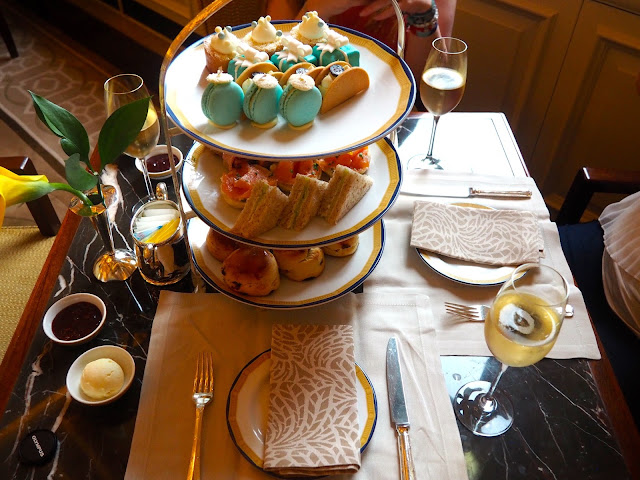
Afternoon Tea at The Peninsula

Outfit - Inverted
You May Also Like
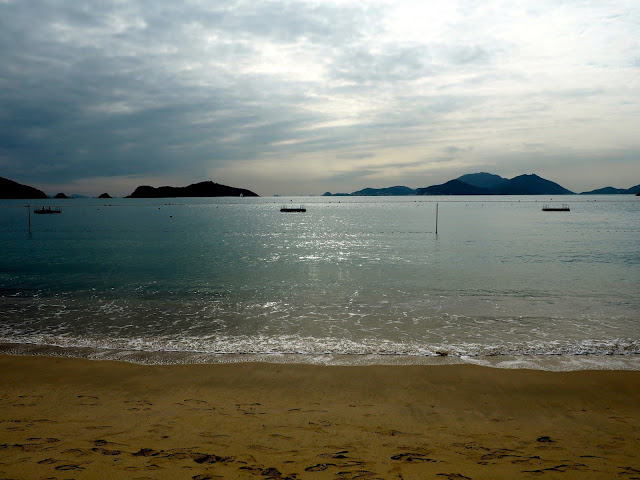
An Afternoon in Repulse Bay
28 November 2015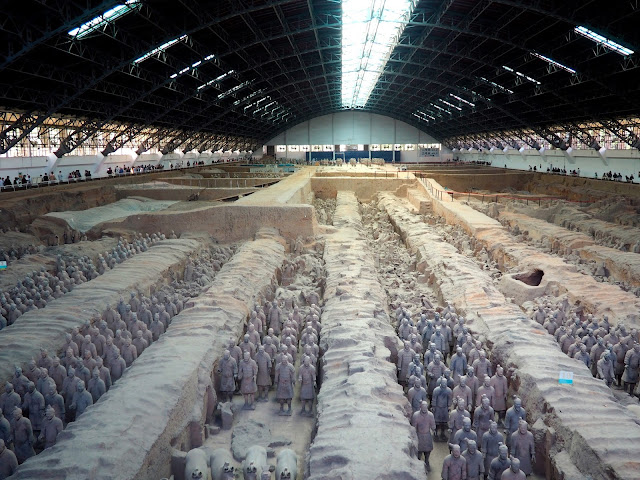
Xian Highlights | China
25 April 2017